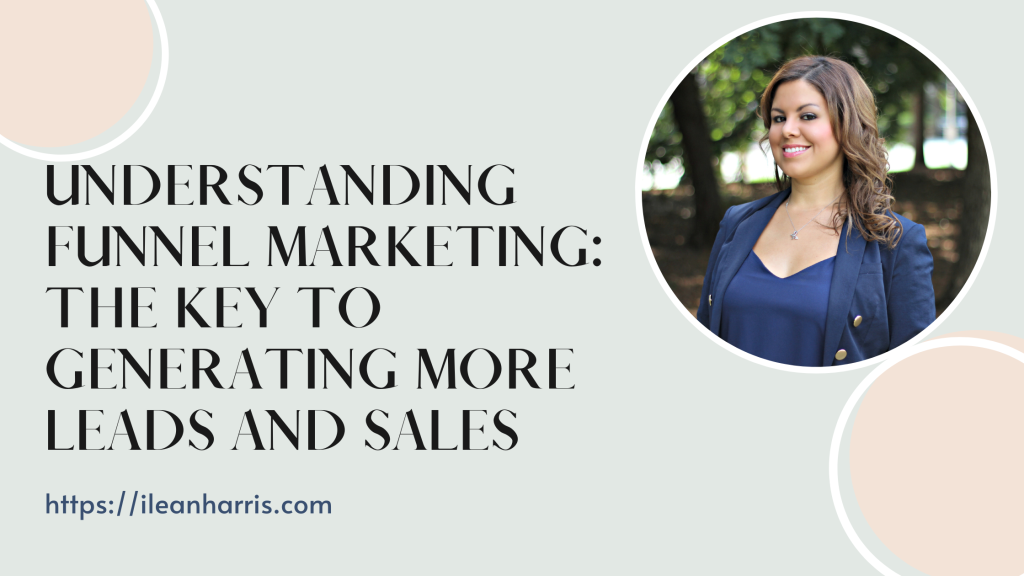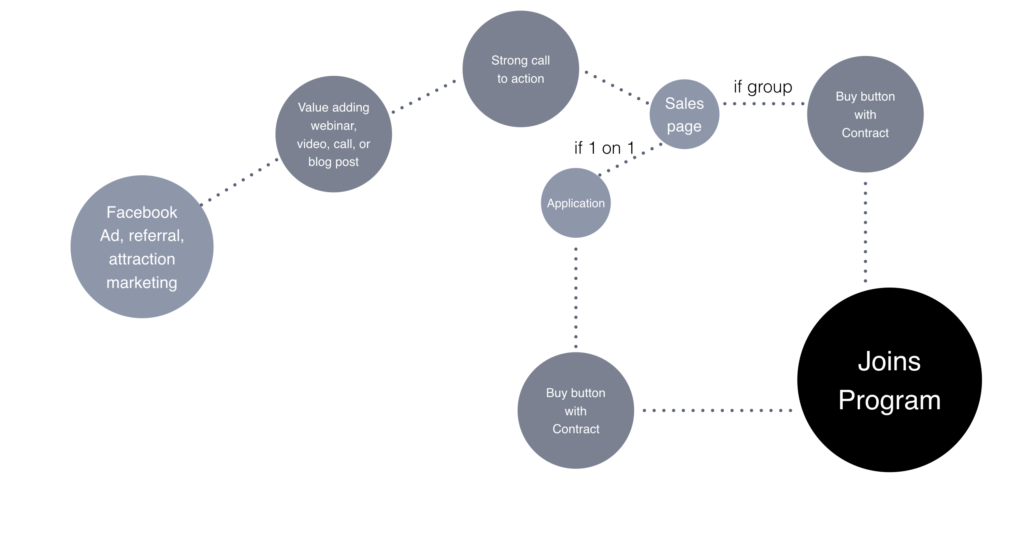
This post is all about what is funnel marketing.
What is Funnel Marketing
Funnel marketing is a strategy that involves guiding potential customers through a series of steps, or “funnel stages,” to convert them into paying customers.
By using a funnel, you can effectively target and nurture leads until they are ready to buy, resulting in more sales and a higher conversion rate.
I have used marketing funnels strategically to grow my online business to have clients in over 20 countries and my email list to over 100,000 subscribers while traveling the world. You can too!
The first stage of a funnel is typically awareness, where you introduce your brand and offerings to potential customers.
Next, you move to the consideration stage, where you provide more detailed information and content to help prospects learn more about your products or services.
The third stage is decision, where you encourage prospects to make a purchase by offering incentives or providing social proof. Finally, the post-purchase stage involves nurturing customers and encouraging repeat purchases.
By understanding funnel marketing, you can create a targeted strategy that guides potential customers through each stage, helping them become loyal customers.
With a well-designed funnel, you can generate more leads, build stronger relationships, and ultimately increase sales and revenue for your business.
A marketing funnel strategy is a way of conceptualizing the process by which potential customers move from awareness to making a purchase, with the goal of maximizing the number of people who complete the journey.
A funnel represents the different stages that a prospect goes through before becoming a customer, and the actions a marketer takes at each stage to encourage the prospect to move forward.
Learn more about a webinar funnel here now.
The typical stages of a marketing funnel are:
- Awareness: The first stage of the funnel, where the prospect becomes aware of your brand and offerings.
- Interest: The prospect has shown some interest in your brand and is looking for more information.
- Consideration: The prospect is considering making a purchase and is comparing your product or service with others.
- Decision: The prospect is ready to make a purchase and is looking for incentives or a reason to do so.
- Retention: The post-purchase stage, where the goal is to retain the customer and encourage repeat purchases.
To create an effective marketing funnel strategy, marketers must focus on creating content and campaigns that target potential customers at each stage of the funnel.
It can look something like this:

This may involve using social media, email marketing, content marketing, and other tactics to guide prospects through the funnel and increase the likelihood of a purchase.
The ultimate goal of a marketing funnel strategy is to generate more leads, build stronger relationships, and increase conversions and revenue for your business.
Click here for a sales funnel template and more.
As a coach, using funnel marketing can be an effective way to attract and convert potential clients into paying customers.
Here are some steps to help you use funnel marketing to grow your coaching business:
- Identify Your Target Audience: The first step in creating a funnel marketing strategy is to identify your target audience. Think about the type of clients you want to attract and what their needs and pain points are.
- Create Awareness: The next step is to create awareness of your coaching business. This can be done through social media advertising, email marketing, and content marketing. Consider offering a free resource or lead magnet to attract potential clients to your website.
- Provide Value: Once you have attracted potential clients to your website, provide them with value by offering free resources such as blog posts, videos, or webinars. This helps to establish you as an authority in your field and builds trust with potential clients.
- Nurture Leads: As potential clients move through the funnel stages, continue to nurture them by providing more personalized content and offers. This can be done through email marketing, personalized messaging, and retargeting ads.
- Convert to Clients: The final stage of the funnel is to convert leads into paying clients. This can be done by offering a free consultation, creating a limited-time offer, or providing a special discount.
- Retain Clients: Once you have converted clients, focus on retaining them by providing ongoing value, support, and incentives for repeat business.
By implementing a funnel marketing strategy, you can attract and convert more potential clients into paying customers and grow your coaching business.
Remember to focus on creating value, building trust, and providing personalized content and offers to move potential clients through the funnel stages.
Learn how to create a sales funnel here now.

How to use marketing funnels to grow your online business
Marketing funnels can be an effective tool to help grow your online business. Here are some steps to help you use marketing funnels to increase your leads, conversions, and revenue:
- Identify Your Target Audience: The first step in creating a marketing funnel is to identify your target audience. Think about the type of customers you want to attract and what their needs and pain points are.
- Create Awareness: The next step is to create awareness of your brand and offerings. This can be done through social media advertising, content marketing, and email marketing. Consider offering a free resource or lead magnet to attract potential customers to your website.
- Provide Value: Once you have attracted potential customers to your website, provide them with value by offering free resources such as blog posts, videos, or webinars. This helps to establish you as an authority in your field and builds trust with potential customers.
- Nurture Leads: As potential customers move through the funnel stages, continue to nurture them by providing more personalized content and offers. This can be done through email marketing, personalized messaging, and retargeting ads.
- Convert to Customers: The final stage of the funnel is to convert leads into paying customers. This can be done by offering a free trial, creating a limited-time offer, or providing a special discount.
- Retain Customers: Once you have converted customers, focus on retaining them by providing ongoing value, support, and incentives for repeat business.
- Analyze and Optimize: Finally, analyze your marketing funnel to see which stages are working well and which may need improvement. Optimize your funnel by testing different offers, messaging, and tactics to improve your conversion rates and maximize your revenue.
By implementing a marketing funnel strategy, you can attract and convert more potential customers into paying customers, increase your revenue, and grow your online business.
Learn how to create a sales funnel that generates leads and sales daily on auto-pilot here.
Remember to focus on providing value, building trust, and providing personalized content and offers to move potential customers through the funnel stages.
This post was all about what is funnel marketing.





